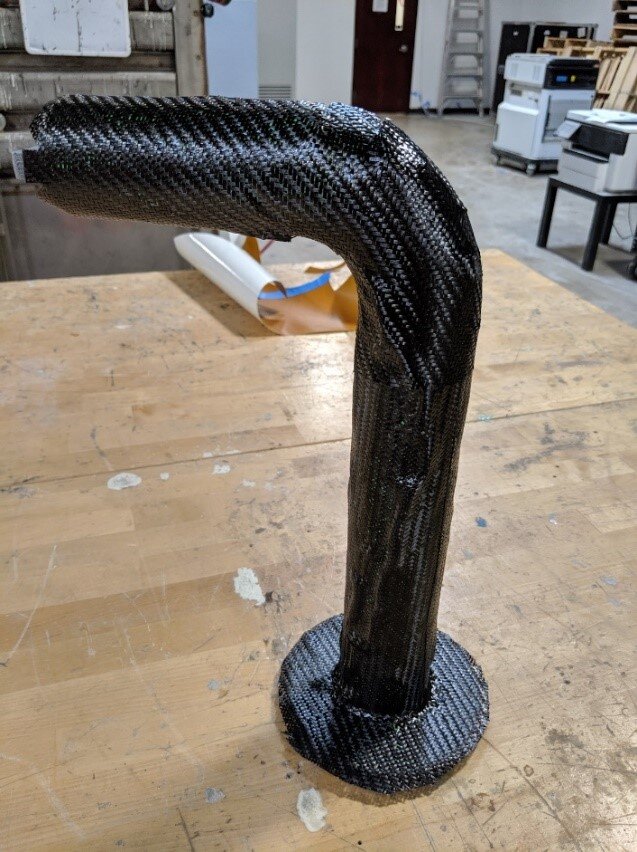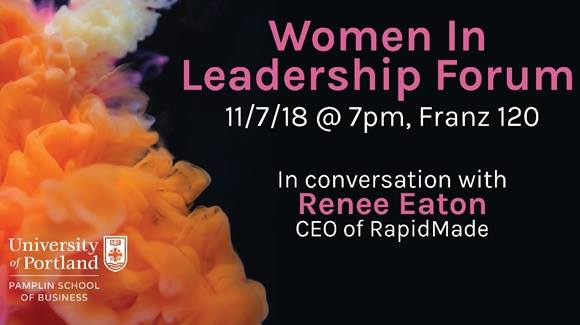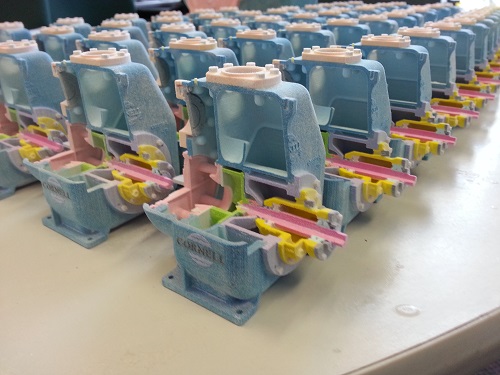RapidMade recently completed research on investigating a solution to produce custom agricultural parts from 3D printed nylon reinforced with fibers in epoxy polymers. The work was completed with Oregon State University and was funded with an SBIR grant from the USDA.
Additive manufacturing reduces the cost and lead time of individually produced parts. Most printed plastic materials lack the strength needed to replace metal parts. Synthetic and natural fiber reinforcement can increase the strength of these lighter plastic parts making them comparable to metal. Well characterized design and manufacturing processes are critical to produce reliable composite parts.
Research focused on:
· structural component designs including materials selection
· pilot manufacturing process development
· manufacturing and mechanical component property validation.
Outcomes identified possible techniques for component design and manufacture to:
· eliminate plastic part anisotropy
· control warp and residual stresses in composite components
· verify plastic/epoxy bond strength
· optimize print orientation
· improve fiber reinforcement application
· establish curing cycle and post-processing requirements.
Future research will study part design techniques to:
· determine best practices
· create structural and processing analysis rules
· explore different material options
· optimize manufacturing processes for small batch production
· evaluate aging and environmentally induced stress responses.
Component design and manufacture showed positive results in terms of low-cost manufacturing process and performance. Fiber-reinforced parts performed better than the plastic-only reference components with strength comparable to the original metal parts. Data suggest that a reliable method for engineering and manufacturing fiber reinforced composites using printed parts was found. Proof-of-concept agricultural and robotic parts that can replace obsolete and custom equipment were shown to be potential affordable alternatives to the originals. Design aspects like matching plastic core and fiber reinforcement characteristics for optimal final composite products need to be addressed in detail.
New composite alternatives can be used to:
· make replacement parts
· increase field productivity
· upgrade or reconfigure machinery
· improve equipment operations and efficiencies
· manufacture components using more sustainable materials
· enable local farms to be more independent in part procurement.
This manufacturing process can enable small production plants to make parts locally as needed. Future work should build on current results by studying custom design, materials selection, manufacturing process optimization and aging and environmentally induced stress responses. Specifically, research focused on bonding reliability between printed parts and fiber reinforcement and combining components in a simple, efficient composite manufacturing process.
Work was subdivided into the following areas:
Mechanical Properties and Anisotropy of 3D Printed Parts. Baseline tests measured printed part mechanical properties prior to testing composite fiber components. ASTM standard tests of mechanical properties and microscopic analysis across a range of printers identified part anisotropy. Print parameters were established to limit anisotropy. Additional design parameters must be developed to limit impact on composite part performance.
Characterization of the 3D Printed Plastic-Fiber Reinforcement Epoxy Bond. Detailed bond tests were performed on parts made using two different fabrication techniques and three alternate fibers. Single lap joints were shear tested to failure to study nylon composite bond response. Multiple test scenarios characterized the nature of the bond, the minimum overlap requirements and the relative results with different fiber materials. Part failure occurred before the bond confirming the hypothesis. Actual bond strength data was captured. The use of organic fibers as an alternative lower cost composite reinforcement was confirmed.
Composite Manufacturing Process Evaluation. An established composite manufacturing process employed for small batch production was used for testing. Research focused on adapting these techniques to printed materials. Successful composite test parts were created and used for mechanical properties testing. Elements of the composite manufacturing process were investigated to improve the epoxy-nylon bond and to minimize component stress during heat curing. Trials were conducted to further simplify manufacturing techniques and optimize part quality. Work focused on three test components and three alternate fiber reinforcement materials. Iterations evaluated manufacturing process and part quality improvements. Findings were summarized in the published research.
Warping of Components During Curing. The effects of bonding between thin wall printed parts and fiber reinforcement using different configurations was studied. Thin wall components and the ability to assemble larger composite parts from multiple smaller printed parts are critical requirements for farming applications. The work focused on composite cooling times and fiber direction. Non-traditional inverse core sandwich constructions were also studied and tested. Results were positive; additional work will focus on further internal part stress reduction.
Design of Fiber-reinforced Test Components: Three designs were tested: a tractor linkage arm, a compound moment arm and a robotic fruit picker. These parts were selected as they experience different operational compressive and tensile stresses. The fiber reinforced parts were dimensionally comparable to the original metal parts. Mass reduction and low-cost manufacturing were assessed.
Construction and Testing of fiber-reinforced, 3D printed composite parts: Baseline finite element analysis for loading and elastic deformation simulations was performed on part designs. Unreinforced printed parts were mechanically loaded and tested; experimental results were compared to the simulations and test part baselines were created. Loading tests were repeated using fiber reinforced composite parts to characterize mechanical property augmentation due to fiber-reinforcement and the overall part performance. Extensive testing was conducted on all three parts using a range of fiber materials. The results were cataloged and contrasted to establish performance models. The work also analyzed the impact of composite construction methods on finished part mechanical properties.
Impact of temperature cycling on fiber-reinforced, 3D printed composite parts: Cyclical temperature tests performed on all parts using multiple fiber materials determined fiber bonding impact. This work measured bonded composite delamination using non-destructive test methods. Results confirmed that printed part design and fiber reinforcement location can impact composite bonding in response to thermal stress. Minimum printed part thickness must be determined to minimize warping, during the initial curing process and in response to subsequent thermal stress. Printed parts need to be designed and manufactured to account for internal thermal stress factors. Design techniques to improve part structural strength properties need to be included in future work. Finally, reinforcing composites should be selected to have a coefficient of thermal expansion that matches the printed core to minimize thermal stress warping.
To read the complete technical research report go to https://www.rapidmade.com/resources




























